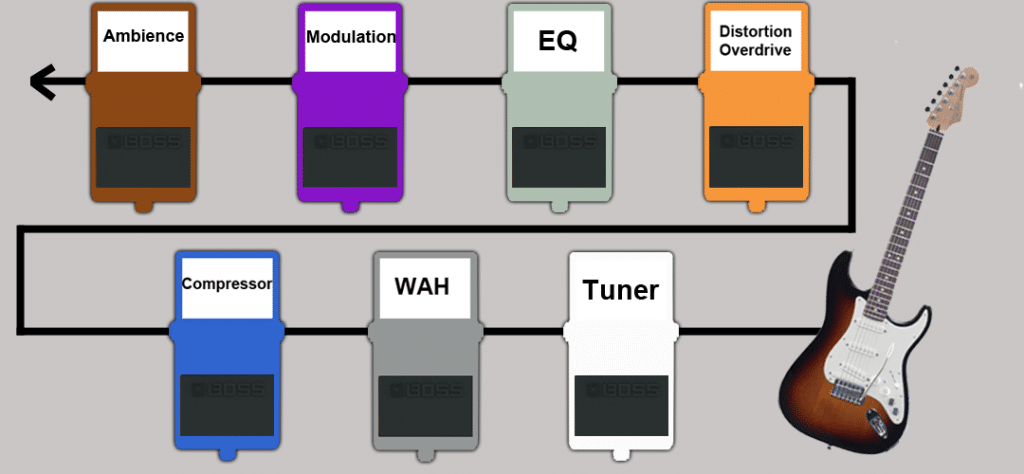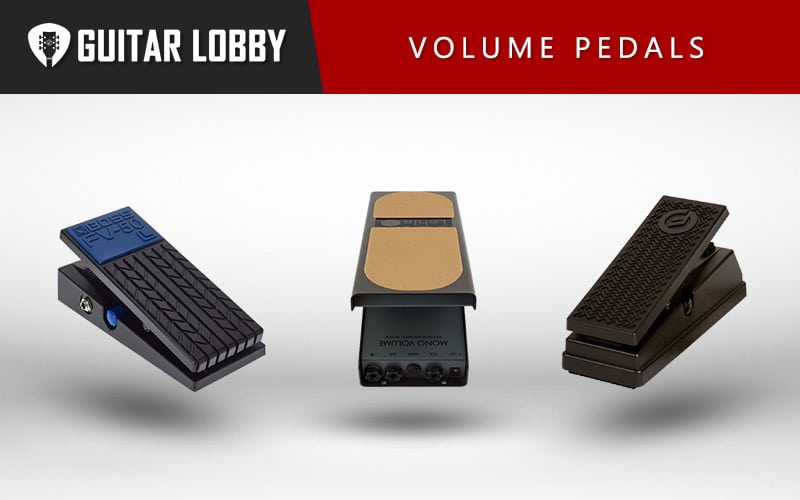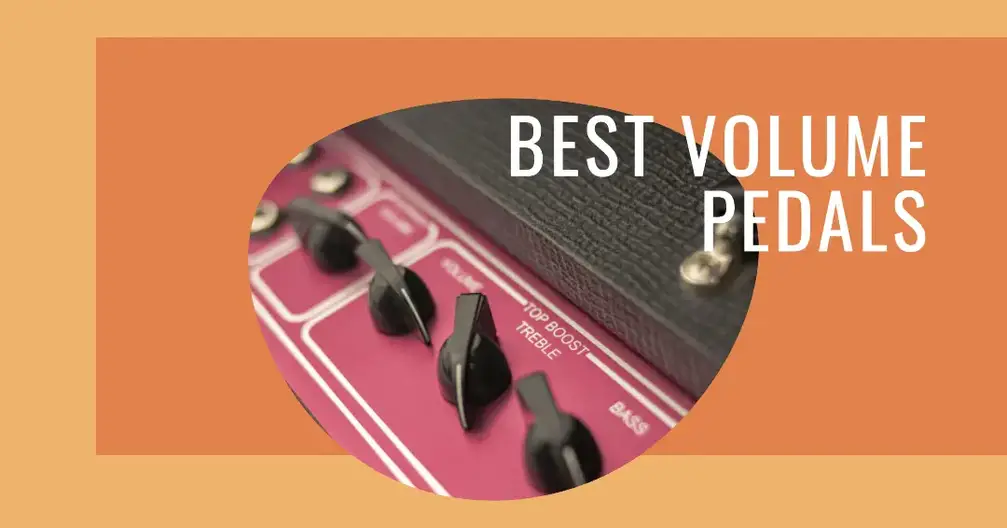Looking to take your guitar playing to the next level? Then it’s time to consider investing in a guitar volume pedal. Whether you’re a beginner or a seasoned pro, a volume pedal can greatly enhance your sound and give you more control over your instrument. In this comprehensive guide, you’ll discover everything you need to know about choosing the best guitar volume pedal for your needs. From the different types of volume pedals available to the key factors to consider when making your selection, we’ve got you covered. So, get ready to explore the world of guitar volume pedals and take your playing to new heights!
Factors to Consider When Choosing a Guitar Volume Pedal
When it comes to finding the best guitar volume pedal for your needs, there are several key factors to consider. Each factor plays a significant role in determining the overall performance and usability of the pedal. By carefully considering these factors, you can ensure that you choose a volume pedal that suits your playing style and requirements.
Types of Guitar Volume Pedals
One of the first factors to consider when choosing a guitar volume pedal is the type of pedal you prefer. There are three main types of volume pedals to choose from: potentiometer, optical, and motion-sensing.
Potentiometer volume pedals are the most common type and are equipped with a potentiometer that controls the volume level. They have a simple and straightforward design, making them reliable and easy to use.
Optical volume pedals, on the other hand, utilize optical sensors to detect the position of the pedal. These pedals offer smoother operation and superior control over the volume level.
Motion-sensing volume pedals are a newer innovation in the market. They use motion-sensing technology to detect movement and adjust the volume accordingly. These pedals provide an innovative and hands-free approach to volume control.
Compatibility
Another crucial factor to consider is the compatibility of the volume pedal. You must ensure that the pedal is compatible with your guitar and other equipment. Compatibility can be categorized into three aspects: analog vs. digital, signal chain, and instrument compatibility.
Analog volume pedals are the traditional choice, offering a warm and natural tone. Digital volume pedals, on the other hand, provide more precise control and can be integrated into digital setups. It is important to determine which type suits your setup and desired sound.
Consider how the volume pedal fits into your signal chain. The placement of the pedal affects the overall sound and functionality. Some pedals may work better before or after certain effects, so it’s essential to think about how the pedal will affect your signal flow.
Lastly, ensure that the volume pedal is compatible with your instrument. Some pedals are designed specifically for electric guitars, while others may work well with acoustic guitars or even other musical instruments.
Build Quality and Durability
Build quality and durability are key considerations when investing in any guitar gear, and volume pedals are no exception. You want a pedal that is built to last and can withstand the rigors of live performances and frequent use.
Consider the construction materials used in the pedal. Look for pedals made from sturdy and durable materials such as aluminum or stainless steel. These materials provide excellent strength and resistance to wear and tear.
Furthermore, a pedalboard-friendly design is worth considering. Pedals with compact and lightweight designs are easier to transport and fit onto your pedalboard seamlessly. Ensure that the pedal has secure mounting options or non-slip features to prevent movement during performances.
The quality of switches and connectors is also crucial. Opt for pedals that use high-quality switches that are durable and responsive. Additionally, ensure that the connectors are reliable and provide a solid connection without any unwanted noise or signal loss.
When assessing build quality and durability, it is also important to consider the manufacturer’s reputation. Look for well-established brands known for their exceptional craftsmanship and attention to detail. Additionally, check if the pedal comes with a warranty and if the manufacturer provides reliable customer support.
Size and Portability
The size and portability of the volume pedal are significant factors, especially if you plan to use it for live performances or frequently transport it. Consider the available space on your pedalboard and how the volume pedal will fit alongside your other effects pedals.
Smaller volume pedals are more compact and take up less space on the pedalboard. However, ensure that the pedal is still comfortable to use and does not feel cramped or crowded.
Weight is another aspect to consider, especially if you travel frequently or have to carry your gear long distances. Opt for lightweight pedals that are easier to transport and less straining on your back.
It is also important to check the power requirements of the volume pedal. Some pedals require batteries, while others can be powered by an external power supply. Consider your power source options and choose a pedal that suits your preferences and setup.
Pedal Action and Feel
Pedal action and feel are vital aspects to consider as they greatly affect the user experience and performance. A smooth and responsive pedal action ensures greater control over the volume levels and allows for seamless transitions.
Consider the smoothness of operation when using the pedal. Does it move effortlessly or feel stiff? Look for pedals that have a smooth and consistent action, allowing for precise volume adjustments.
Response time is another crucial factor to consider. How quickly does the pedal respond to your foot movements? Delayed or inconsistent response times can lead to unwanted volume jumps or uneven transitions.
Taper curve refers to how the pedal’s volume changes in relation to how far it is depressed. Some pedals have a more gradual curve, allowing for finer adjustments, while others have a steeper curve, allowing for more drastic volume changes. Consider which taper curve suits your playing style and musical preferences.
Passive vs. Active Pedals
Passive and active volume pedals are two distinct types, each with its own set of advantages and considerations. Understanding the differences between the two can help you make an informed decision when choosing a volume pedal.
Passive volume pedals do not require a power source as they use a passive circuit to control the volume. They are simpler in design and often more affordable. However, they can affect your guitar’s tone, especially when used with longer cables.
Active volume pedals, on the other hand, require power and feature built-in electronics to control the volume. They offer more precise control and often come with additional features, such as boost options. While they generally maintain the guitar’s tone better, they can be more expensive.
Consider the tonal impact that each type of pedal may have on your guitar. Some players prefer the natural and warm tones produced by passive pedals, while others value the additional features and precise control of active pedals.
Mono vs. Stereo
When choosing a volume pedal, consider whether you need a mono or stereo pedal. The choice depends on the specific requirements of your setup and the desired audio experience.
Mono volume pedals are the standard choice and are suitable for most setups. They work with a single mono output and are compatible with the majority of amplifiers and effects pedals.
Stereo volume pedals, on the other hand, are designed for setups that utilize stereo effects or have multiple outputs. They allow for independent control over the volume of each stereo channel, offering greater versatility and control in stereo setups.
Consider your specific use cases and the audio experience you want to achieve. If you are primarily using mono effects and a single amplifier, a mono volume pedal will likely suffice. However, if you have a sophisticated stereo setup, a stereo volume pedal will give you full control over your audio.
Expression Pedal Compatibility
Some volume pedals offer compatibility with expression pedals, which can greatly expand their functionality and versatility. It is worth considering this feature, especially if you already use or plan to use expression pedals in your setup.
Expression pedal inputs allow you to connect an expression pedal to the volume pedal, giving you control over various parameters such as volume, tone, or effects. This feature enables hands-free control and allows for unique and expressive performances.
Expression pedal outputs, on the other hand, allow you to connect the volume pedal to other devices or effects pedals that accept expression pedal inputs. This opens up endless possibilities for creative sound shaping and modulation.
Integration with other pedals and effects is an essential aspect to consider when looking at expression pedal compatibility. Ensure that the volume pedal and expression pedal work seamlessly together and can be easily integrated into your existing setup.
Price Range
Price range is an important consideration for many guitarists when choosing a volume pedal. Like any gear, volume pedals can vary widely in price, depending on factors such as build quality, features, and additional functionalities.
Determine your budget and consider what features and qualities are most important to you. Set a price range that aligns with your budget and preferences, and carefully compare the options within that range.
While it is important to stay within your budget, don’t forget to prioritize quality and durability. Investing in a high-quality pedal may cost more initially but can save you money in the long run by lasting longer and providing a better user experience.
Customer Reviews and Ratings
Customer reviews and ratings are valuable resources when researching and comparing different volume pedals. Other guitarists’ experiences can provide insights into the usability, performance, and overall satisfaction with a particular pedal.
When researching online reviews, pay attention to recurring themes or comments. Look for consistency in feedback across multiple platforms and sources. This can help you determine the reliability of the information and give you a more well-rounded view of the pedal’s pros and cons.
Consider user ratings and overall satisfaction levels. While individual preferences may vary, higher ratings and positive reviews generally indicate a well-received and reliable volume pedal.
If possible, ask for recommendations from fellow guitarists or seek advice from music stores and professionals. Personal recommendations can offer valuable insights and help narrow down your choices.
In conclusion, choosing the best guitar volume pedal requires careful consideration of various factors. From the type of pedal and its compatibility to build quality, size, and customer reviews, each factor plays a vital role in finding the perfect pedal for your musical needs. By taking the time to research and evaluate these factors, you can make an informed decision and enhance your guitar playing experience.











